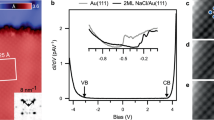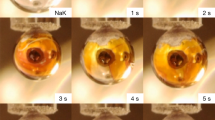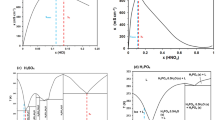Abstract
FRANCK and his co-workers have shown that the vapours of alkali halides show a continuous absorption spectrum beginning from a long waverlength limit and extending towards the ultra-violet. He interpreted the absorption spectrum as follows: if we take a substance like sodium chloride the valency electron of Na in the normal state may be supposed to pass over completely to Cl and the combination consists of Na+Cl-. Such a combination is called ionic. When light falls on sodium chloride vapour, the electron passes over from Cl- to Na+, the molecule thus splitting into Na and Cl. Franck obtains the heat of formation Q of NaCl from atomic Na and atomic Cl with the aid of a Born cycle and finds that Q =N hν where ν = frequency of the beginning of continuous absorption.
This is a preview of subscription content, access via your institution
Access options
Subscribe to this journal
Receive 51 print issues and online access
$199.00 per year
only $3.90 per issue
Buy this article
- Purchase on Springer Link
- Instant access to full article PDF
Prices may be subject to local taxes which are calculated during checkout
Similar content being viewed by others
Author information
Authors and Affiliations
Rights and permissions
About this article
Cite this article
DUTTA, A., SAHA, M. Absorption Spectra of Saturated Chlorides of Multivalent Elements. Nature 127, 625–626 (1931). https://doi.org/10.1038/127625b0
Issue Date:
DOI: https://doi.org/10.1038/127625b0
This article is cited by
-
Schl�sse auf Bindungsfestigkeit und Bindungsart aus kontinuierlichen Absorptionsspektren
Die Naturwissenschaften (1932)
Comments
By submitting a comment you agree to abide by our Terms and Community Guidelines. If you find something abusive or that does not comply with our terms or guidelines please flag it as inappropriate.



